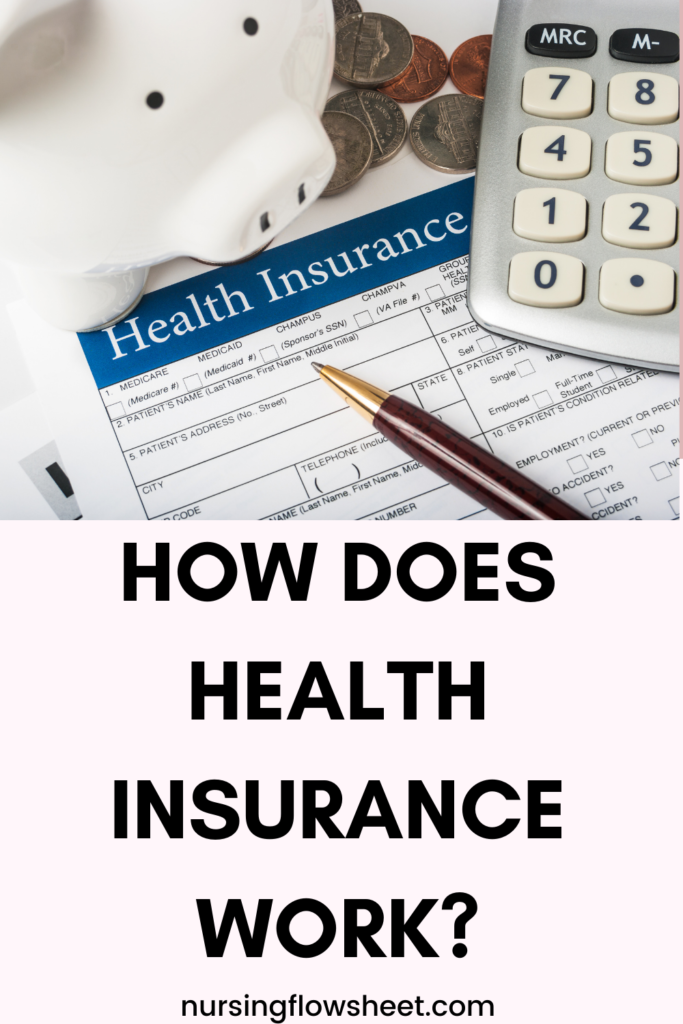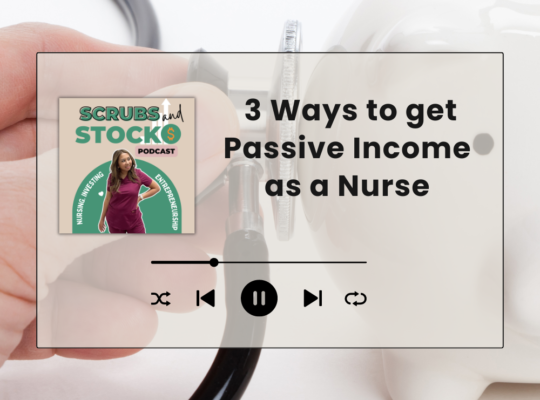30 million U.S. residents lacked health insurance in the first half of 2020, according to newly released estimates from the National Health Interview Survey (NHIS). That’s nearly 10% of the US population. It represents the patients who come into our clinic and hospitals without coverage for an injury, condition or accident that can result in medical expenses and debt causing many years of financial hardship.
Most people can’t even afford to leave their full time jobs for the fear of not being able to afford insurance. Without insurance coverage, basic health prevention and routine exams are also overlooked which contributes to bigger health issues later on.
I have worked in the healthcare field for over 10 years, and while I don’t work in the administrative side, I read up on health insurance so I have an idea of how the system works. If you’re in the market for health insurance coverage, here’s what you’ll need to know.

What is covered by health insurance?
Most health insurances are sponsored by your employer but you can also get one for yourself in most insurance marketplace. The coverage of health insurance will depend and vary.
For example, many employer-sponsored health insurance plans cover vision care, such as glasses and contacts, whereas plans purchased independently often do not offer vision care for adults.
The Affordable Care Act (ACA), better known as Obamacare, introduced the requirement of Minimum Essential Care (MEC), which refers to 10 essential health benefits that ACA compliant health plans must have.
What are the benefits of having health insurance?
These essential benefits include hospitalization, prescription coverage, lab services, pediatric services, and emergency care, as well as preventive and wellness services, which would include periodic checkups. Most cosmetic services like botox injections, weight loss surgery are no considered essential so some plans may not cover these.
You can also have preventative and routine exams covered. ACA-compliant plans also cover ambulatory services, which refer to medical services provided even if not admitted to a hospital.
Out-of-pocket costs
Keep in mind that even though most insurance plans have extensive coverage, you may still need to pay some out-of-pocket costs EVEN for covered services.
ACA-compliant plans are grouped by “metals categories”, including Bronze, Silver, Gold, and Platinum, with each category corresponding to increasing levels of coverage as you move up in the metal tiers.
Below are estimates of coverage percentages as provided by Healthcare.gov.
| Plan category | Insurer share | Insured share |
| Bronze | 60% | 40% |
| Silver | 70% | 30% |
| Gold | 80% | 20% |
| Platinum | 90% | 10% |
Open enrollment
Whether using the Marketplace at Healthcare.gov or a state-specific marketplace, you’ll find that you can only buy ACA-compliant health insurance at certain times, called open enrollment. My employer’s open enrollment ended last week so make sure you check with your HR.
However, there are several exceptions to the rule, like getting married, having children, or if you lose your health insurance through an employer.
If you qualify for Medicaid or Children’s Health Insurance Program (CHIP), you can also enroll at any time.
Health Insurance Terms
While health insurance can help prevent financial catastrophe due to medical expenses, it isn’t without cost.
These are the primary terms you’ll need to understand when purchasing coverage.
- Health insurance premium: The premium is the payment for the insurance coverage itself and premium amounts are driven by age, location, tobacco use, plan category (metal tier), and individual vs. family enrollment. This is the money that is taken out of your paycheck for health insurance.
- Copayment: A copayment is paid by the insured and is usually a fixed dollar amount paid directly to the service provider. For example, you have a copayment of $25 every time you go to a specialty doctor visit.
- Coinsurance: Similar to a copayment, coinsurance is an amount paid by the insured and is typically a percentage of the total cost of service
- Deductible: Most plans have a deductible in addition to copayments or coinsurance. A deductible is an annual amount you’ll need to satisfy before your coverage begins to pay for medical expenses. Preventive services are usually not subject to a deductible.
- Out-of-pocket (annual) maximum: Between copayments and deductibles, out of pocket costs can add up. An out-of-pocket-maximum sets a limit to how much you pay out-of-pocket, with the insurer paying for all qualified expenses once the annual out-of-pocket limit is reached.
- Lifetime maximum: A lifetime maximum refers to the maximum amount an insurer will pay for a certain medical service or category during the entire course of your coverage. Lifetime maximums may apply to orthodontics, for example.
- Annual limit: Similar to lifetime maximums, insurers may limit the annual amount they will pay for certain services. Again, it’s more common for this to apply to add-on coverage, like dental or vision care.
Example of how health insurance coverage works
Let’s say you’re a 30 year old who visited the doctor for stomach pain and learned that you have kidney stones.
Kidney stone treatment is typically covered by health insurance. If you have health insurance, your out of pocket costs would consist of a doctor visit specialist copay, prescription drug copays, possibly a hospital copay of $100 or more, and coinsurance of 10% to 50% for the procedure, which could reach the yearly out-of-pocket maximum.
For patients not covered by health insurance, kidney stone treatment typically costs less than $500 to allow the stone to pass naturally with monitoring from a doctor, and possibly prescription medication. For example, at Southern Illinois Urology, the cost of a doctor consultation is $150. One medicine sometimes prescribed to patients with kidney stones, Urocit-K, costs about $65 for a one-month supply at Drugstore.com.
Kidney stone treatment can cost from just under $10,000 to $20,000 or more for surgical removal or extracorporeal shock wave lithotripsy (ESWL).
The cost of medical expenses with no health insurance will vary state by state.
Health insurance plan options
In order to take advantage and save with overall healthcare costs, you also have to understand network types. Health insurance network types refer to how the network is structured and how much freedom you have to choose your doctors or providers.
- HMO: A Health Management Organization uses a controlled structure to help reduce the cost of healthcare, often making HMO the least expensive coverage in regard to premiums. Your primary care physician acts as a central point for in-network care and can approve a specialist or special procedure if needed. Non-emergency care outside of your network typically is not covered by an HMO. An HMO is a regional network.
- PPO: A Preferred Provider Organization provides more flexibility because you don’t need to choose a primary care physician nor do you need a referral to see a specialist. Non-emergency out-of-network coverage is provided. However, out-of-network services are typically covered for a lesser amount as a percentage. PPOs may include out-of-state providers that are still considered to be in-network providers.
- POS: A Point of Service plan functions like a hybrid of an HMO and a PPO. Your primary care physician still acts as a central point for care and referrals, but you have the option to choose out-of-network providers, albeit with a higher out-of-pocket cost.
- EPO: An Exclusive Provider Network is another type of hybrid between an HMO and a PPO. In this case, you don’t need a primary care physician for referrals but you are limited to in-network providers for coverage. Non-emergency out-of-network services must be paid out-of-pocket.
Where network types speak to your freedom to choose providers and care, metal tiers for ACA-compliant plans speak to the level of coverage, meaning what percentage of your care is covered by the insurance plan compared to how much you pay out-of-pocket.
Health insurance programs administered by the government
Several government-sponsored health insurance plans are available as well. Eligibility is based on age, income, or both.
- Medicare: Most people are familiar with Medicare, which is a healthcare program for seniors age 65 and up. Medicare is split into 4 parts, with part A & B providing hospitalization (Part A) and medical insurance (Part B) coverage. Based on income, there may be a monthly premium for Part B. Medicare Part C (Medicare Advantage) is private market coverage that can replace Part A & B and which requires separate premiums. Seniors may wish to research Medicare Part C if they require dental or vision care coverage. Part D refers to Medicare’s prescription drug benefit.
- Medicaid: Although it may have different names in different states, Medicaid is largely uniform throughout the country and provides free or low-cost healthcare coverage to qualifying individuals or families based on income. It is possible to qualify for both Medicare and Medicaid. Dental and vision care are included coverages.
- CHIP (Children’s Health Insurance Program): Aimed squarely at providing healthcare for children, CHIP is available for families that earn too much to qualify for Medicaid but who need coverage for dependent children.
- MHS (Military Health System): With over 9 million beneficiaries MHS is one of the nation’s largest healthcare institutions and provides coverage for veterans, active military members, and military reserve personnel. Eligibility for various coverage options are based on service status and/or awards.
- IHS (American Indian and Alaska Natives): Providing coverage for any of the 567 federally recognized tribes, IHS provides a number of healthcare services including hospitalization, elder care, vision care, and more.
Take advantage of an HSA
If you’re able to use a high-deductible health plan, you can also qualify for a health savings account (HSA), a tax-advantaged savings plan which allows you to use pre-tax money to pay qualified medical expenses.
READ: How to use HSA for retirement
What is the penalty for not having health insurance?
Beginning in 2019, there is no longer a federal tax penalty for not having health insurance.
Even in cases where there is no penalty for not having health insurance, making the investment in health insurance is often a wise financial choice. The national average cost for inpatient hospitalization is over $2,000 per day.
Health insurance coverage puts a cap on potential expenses. Without coverage, a 30-day hospital stay following an illness or an accident could cost tens of thousands of dollars. Longer stays could cost hundreds of thousands, putting your financial future at risk.
With coverage, your out-of-pocket costs are capped by the annual out-of-pocket limit. Insurance of all types is designed to protect against large losses, protection you would lose by not having health insurance coverage.
In conclusion
Healthcare expenses are difficult to predict on an individual level — and that’s exactly where health insurance shows its value.
By choosing the right plan for you or your family, you’re effectively smoothing out the peaks and valleys common to healthcare costs over time.
If you’re able to choose a high-deductible health plan and a health savings account, the combination of these two can help reduce your overall healthcare expenses in the short term while helping you save for the future as well.







